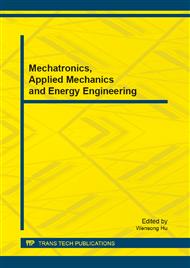p.410
p.416
p.421
p.427
p.435
p.441
p.448
p.456
p.463
A Design of Multi-Band UHF Sensor for Partial Discharge Detection
Abstract:
The selection and design of the sensor is one of the key technologies for UHF PD detection. The UHF sensors popular used in PD detection and location in substation are partial discharge UHF sensor are usually ultra wideband antenna in the frequency range of 200 MHz to 1.5 GHz, which contains interference from communication signals. Accordingly, in order to improve the detection sensitivity and the signal-to-noise ratio, a kind of multi-band UHF narrowband sensor is proposed and designed in accordance with the principles of the loop antenna for PD detection. The proposed frequency resonant bands are set in the ranges of 480MHz-520MHz, 800MHz-850MHz and 1.1GHz-1.2GHz. The design based on simulation is finished and the performances of the prototype sensor are researched by parametric test and PD detection of three typical discharges: corona discharge, surface discharge and metallic particles discharge generated by PD mode. Results show that the selection of band for the UHF sensor is reasonable, and the sensor is with high sensitivity.
Info:
Periodical:
Pages:
435-440
Citation:
Online since:
September 2013
Authors:
Keywords:
Price:
Сopyright:
© 2013 Trans Tech Publications Ltd. All Rights Reserved
Share:
Citation:


